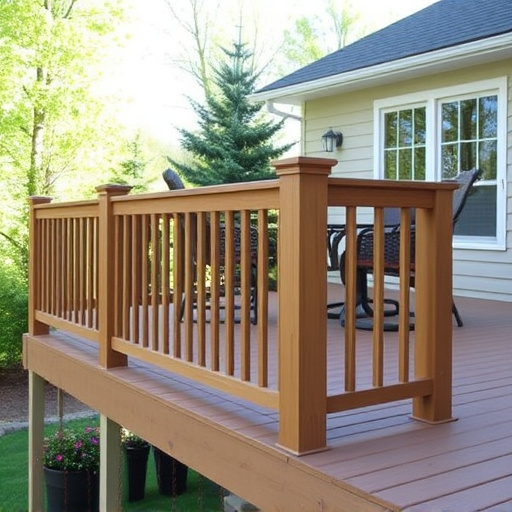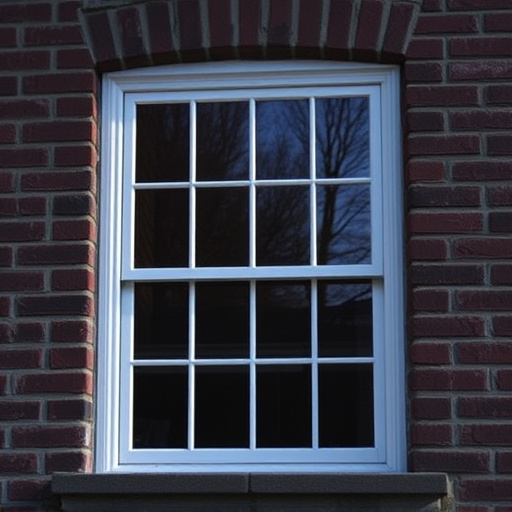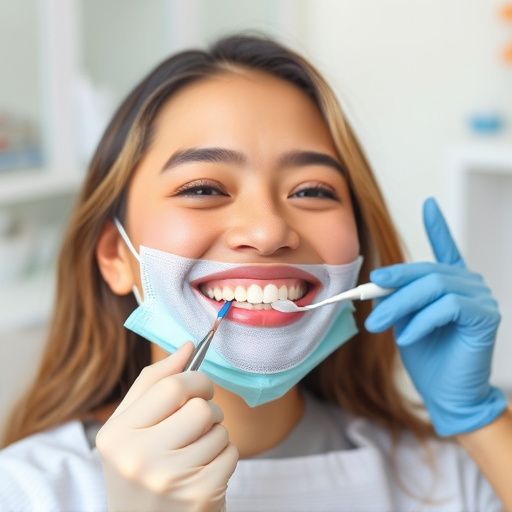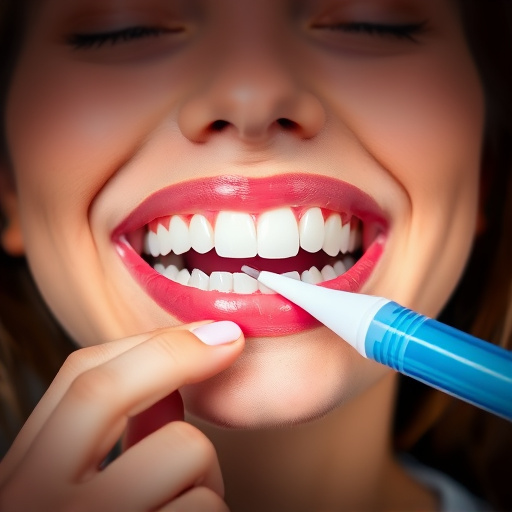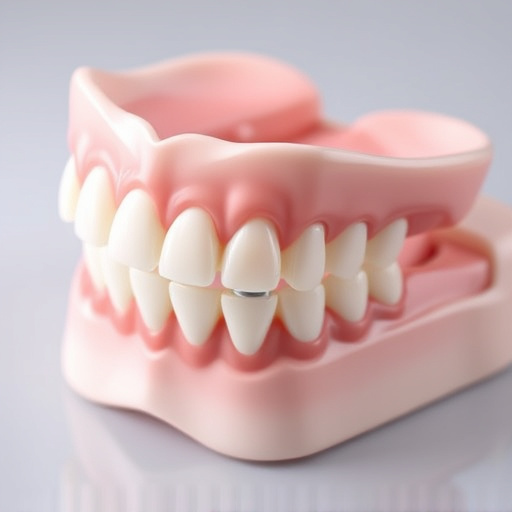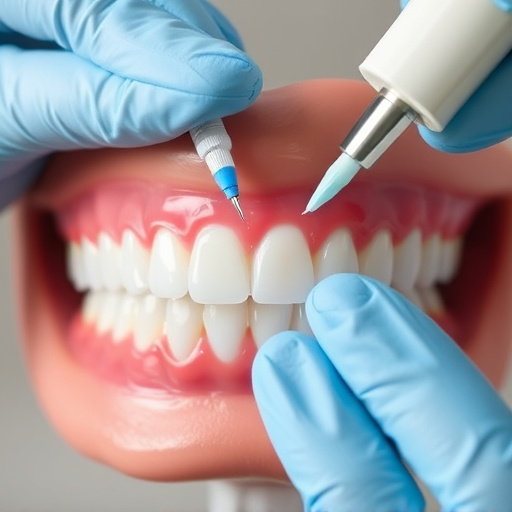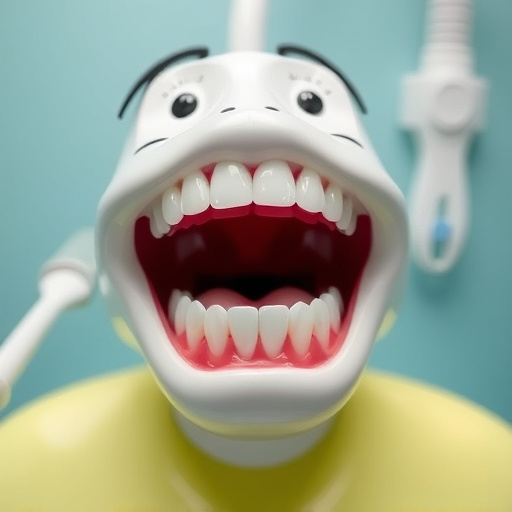TMJ disorder (TMD) treatment has evolved, offering patients drug-free options for managing symptoms like jaw pain and clicking sounds through general dentistry techniques such as dental bonding. Non-invasive approaches including splint therapy, jaw alignment correction, and muscle relaxation massage are effective, especially for pediatric patients. Holistic methods combining lifestyle adjustments, home remedies, regular dental cleanings, heat/ice therapy, posture improvements, dietary changes, massage, and mouth guards provide long-term relief without medication.
Are you struggling with TMJ disorder (TMD) and seeking relief without medication? This comprehensive guide explores comfortable treatment options for managing TMD symptoms. We delve into non-invasive approaches, effective lifestyle changes, and home remedies that offer long-term pain relief. Understanding the various treatment modalities available allows you to navigate your journey towards a quieter, more comfortable jaw with confidence, reclaiming your daily comfort and peace of mind.
- Understanding TMJ Disorder and Its Comfortable Treatment Options
- Non-Invasive Approaches for Effective Pain Relief
- Lifestyle Changes and Home Remedies for Long-Term Management
Understanding TMJ Disorder and Its Comfortable Treatment Options
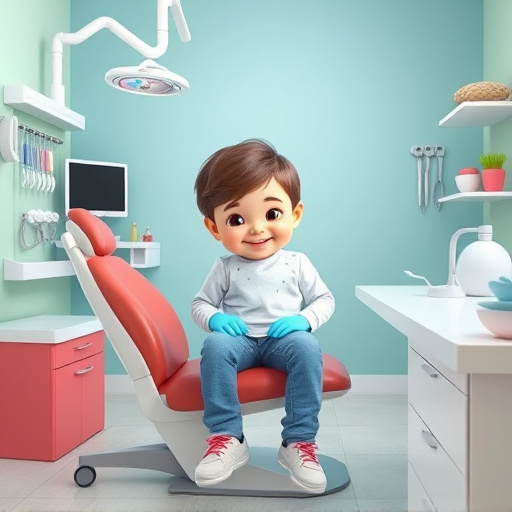
TMJ disorder treatment has evolved to offer a range of comfortable options for those suffering from this condition. TMJ, or temporomandibular joint, refers to the intricate joint that connects your jawbone to your skull, allowing for essential chewing and speaking functions. When this joint becomes affected by disorders such as TMJ dysfunction, it can lead to uncomfortable symptoms like jaw pain, clicking sounds, and difficulty opening or closing the mouth.
Understanding these symptoms is crucial in identifying potential treatments. One of the most comforting approaches is through general dentistry techniques, which may include dental bonding for small adjustments. For children’s dentistry patients with TMJ issues, gentle care is administered to ensure a comfortable recovery. These treatment methods focus on alleviating pain without relying on medication, making them ideal alternatives for those seeking a drug-free approach to managing TMJ disorder symptoms.
Non-Invasive Approaches for Effective Pain Relief

Many individuals suffering from TMJ disorder (TMD) seek relief without resorting to medication. Thankfully, there are numerous non-invasive approaches that offer effective pain management for TMD patients. These methods focus on alleviating symptoms and improving overall oral health without the use of drugs. One such approach is comprehensive dental care, which involves a detailed examination and tailored treatment plans. Dentists skilled in TMD management can provide a range of solutions, from splint therapy to correct jaw alignment to specialized massage techniques for muscle relaxation.
Children’s dentistry and family dentistry practices also offer alternative treatments, ensuring accessibility for all ages. Simple adjustments like improving posture, practicing proper chewing habits, and incorporating stress-reducing activities into daily routines can significantly impact TMD symptoms. Additionally, temperature therapies, such as hot or cold compresses, have shown promise in relieving pain and inflammation associated with TMD. These non-invasive methods empower individuals to take control of their comfort and quality of life without relying solely on medication.
Lifestyle Changes and Home Remedies for Long-Term Management

Many people struggling with TMJ disorder find that a combination of lifestyle changes and home remedies can provide long-lasting relief. Beyond traditional medical interventions, adopting healthy habits can significantly manage symptoms. Regular dental cleanings play a crucial role in maintaining oral health, reducing stress on the temporomandibular joint (TMJ). Additionally, applying heat or ice packs to the jaw area can offer immediate comfort and reduce inflammation. Simple adjustments like chewing gum, avoiding hard or chewy foods, and maintaining proper posture can alleviate pressure on the TMJ.
For some, homeopathic treatments like massage therapy or using a mouth guard during sleep have proven effective. These strategies not only soothe the joint but also promote relaxation, reducing muscle tension related to TMJ disorder. While dental bonding and cosmetic fillings might be considered for aesthetic purposes in other contexts, they are sometimes used to address TMJ issues by correcting misalignments or repairing damaged teeth contributing to the disorder’s symptoms.
TMJ disorder no longer needs to cause discomfort or distress. With a range of comfortable, non-invasive treatment options available, individuals can effectively manage their symptoms and regain control of their daily lives. By combining professional care with lifestyle adjustments and home remedies, those suffering from TMJ disorder can find lasting relief and improved oral health. Remember, seeking early intervention is key to managing this condition comfortably and preventing further complications.
